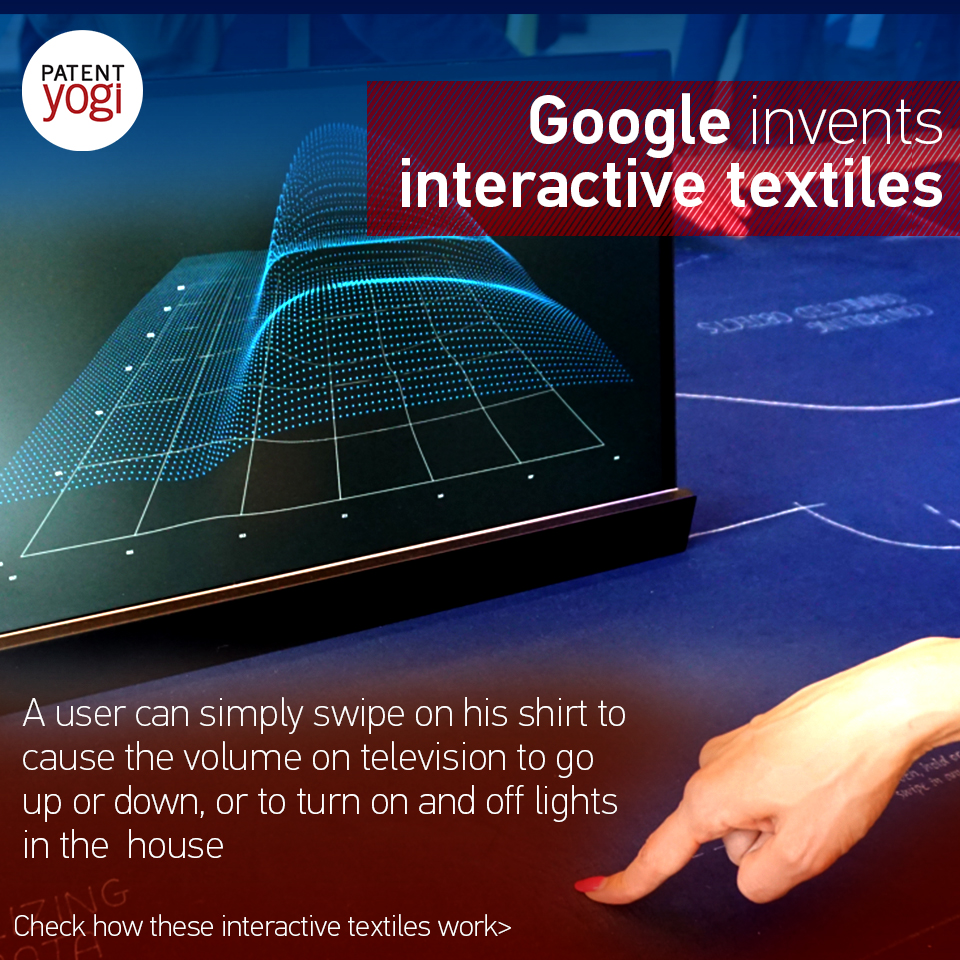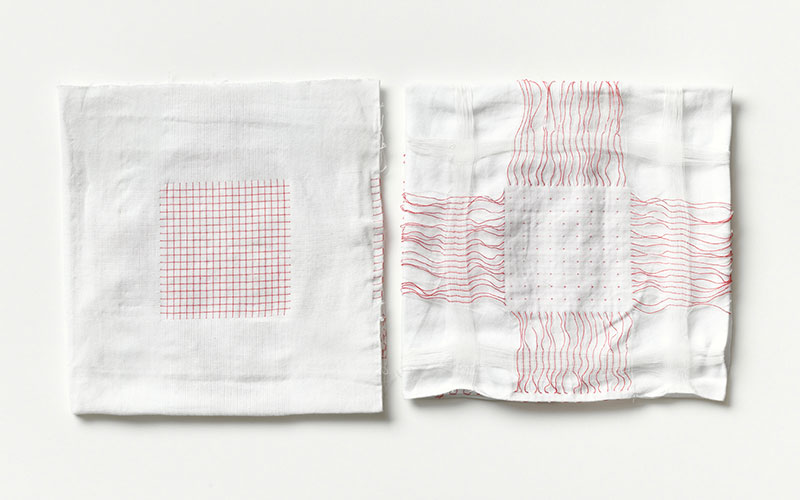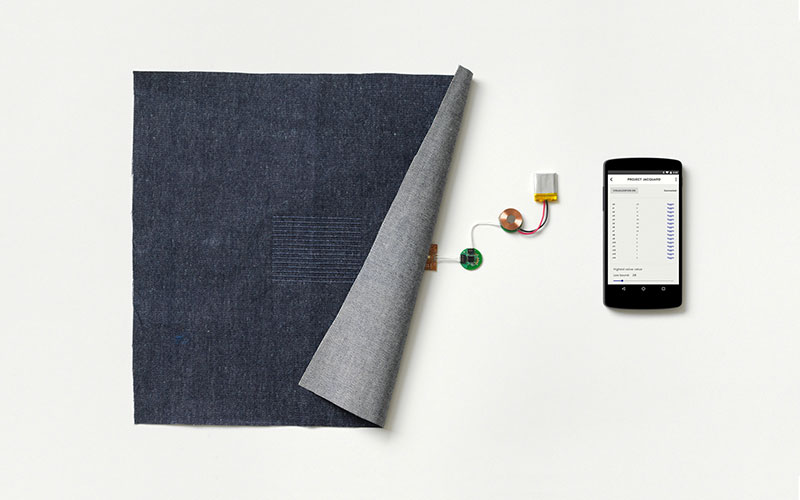Conventional touch pads are generally non-flexible and relatively costly to produce and to integrate into objects.
This has limited the use touch sensors to electronic devices like smartphones, tablets and computers. Google plans to break through this limitation and make touch inputs ubiquitous.
Accordingly, Google has invented interactive textiles that can process the touch-input to generate touch data that is useable to initiate functionality at various remote devices that are wirelessly coupled to the interactive textile. For example, the interactive textile will aid users in controlling volume on a stereo, pausing a movie playing on a television, or selecting a webpage on a desktop computer. Due to the flexibility of textiles, the interactive textile can be easily integrated within flexible objects, such as clothing, handbags, fabric casings, and hats.

According to a recent patent application, these interactive textiles include a top textile layer and a bottom textile layer. Conductive threads are woven into the top textile layer and the bottom textile layer. When the top textile layer is combined with the bottom textile layer, the conductive threads from each layer form a capacitive touch sensor that is configured to detect touch-input. The bottom textile layer is not visible and couples the capacitive touch sensor to electronic components, such as a controller, a wireless interface and an output device (e.g., an LED, a display, or speaker).
The conductive thread of the interactive textile includes a conductive core that includes at least one conductive wire and a cover layer constructed from flexible threads that covers the conductive core.

Further, a gesture manager enables the user to create gestures and assign the gestures to various functionalities of the computing device.

For example, the interactive textile integrated with a shirt of a user can be configured to control the user’s smart phone in the user’s pocket, television in the user’s home, smart watch on the user’s wrist, or various other appliances in the user’s house, such as thermostats, lights, and music. For example, the user may be able to swipe up or down on interactive textile integrated within the user’s shirt to cause the volume on television to go up or down, to cause the temperature controlled by a thermostat in the user’s house to increase or decrease, or to turn on and off lights in the user’s house.
Publication number: US 20160282988
Patent Title: Two-Layer Interactive Textiles
Publication date: 29 Sep 2016
Filing date: 4 Dec 2015
Inventors: Ivan Poupyrev;
Original Assignee: Google Inc.

